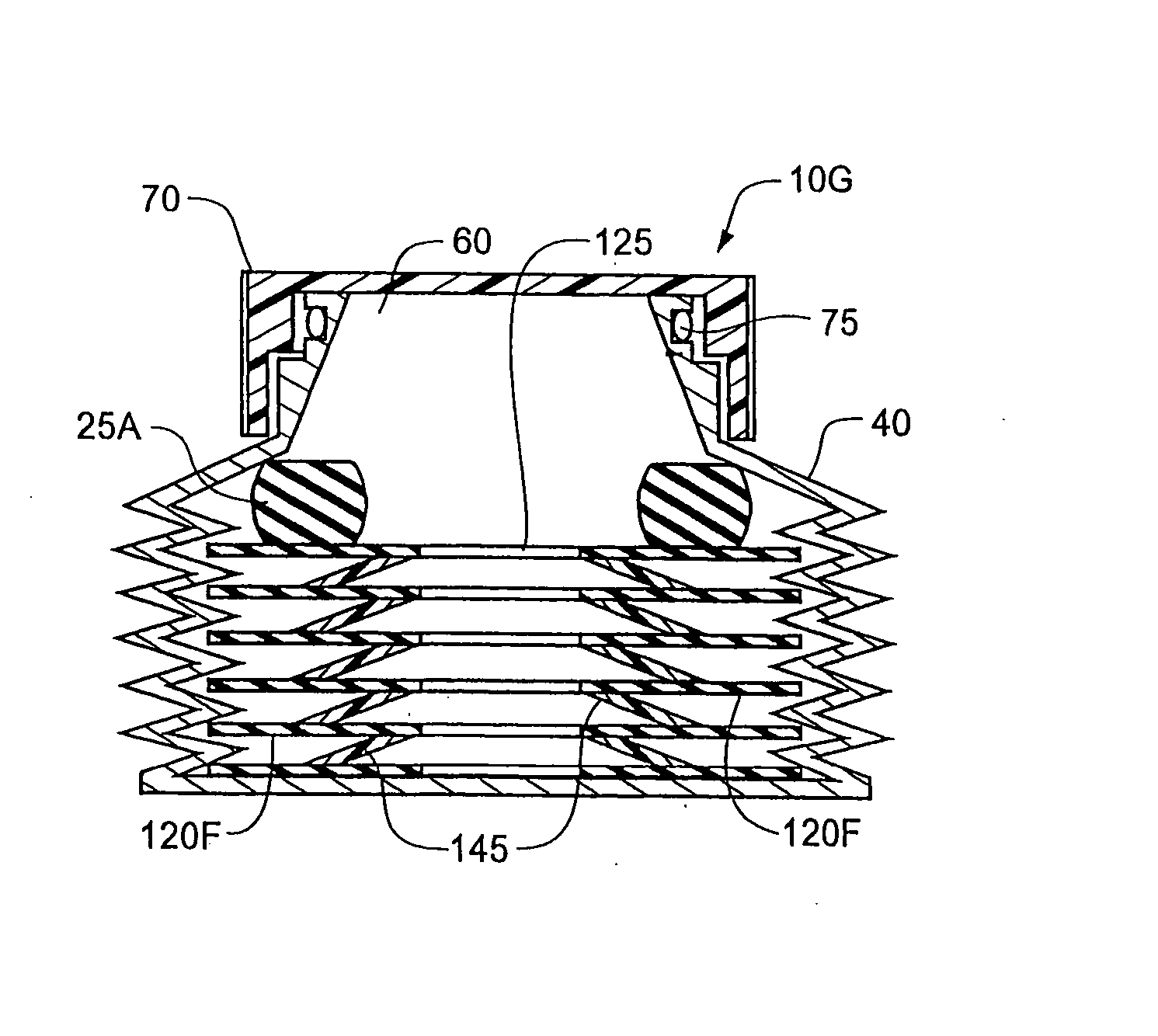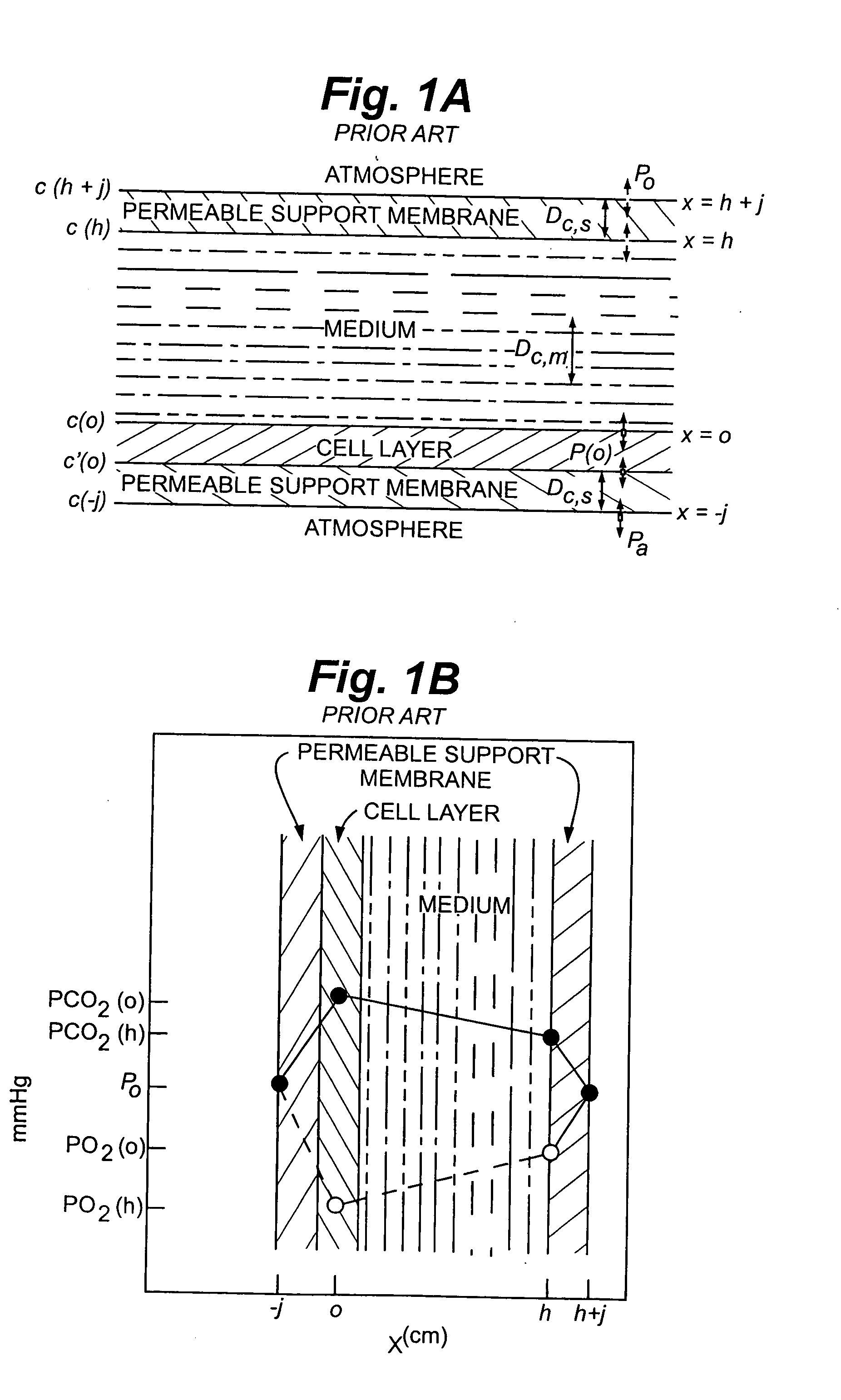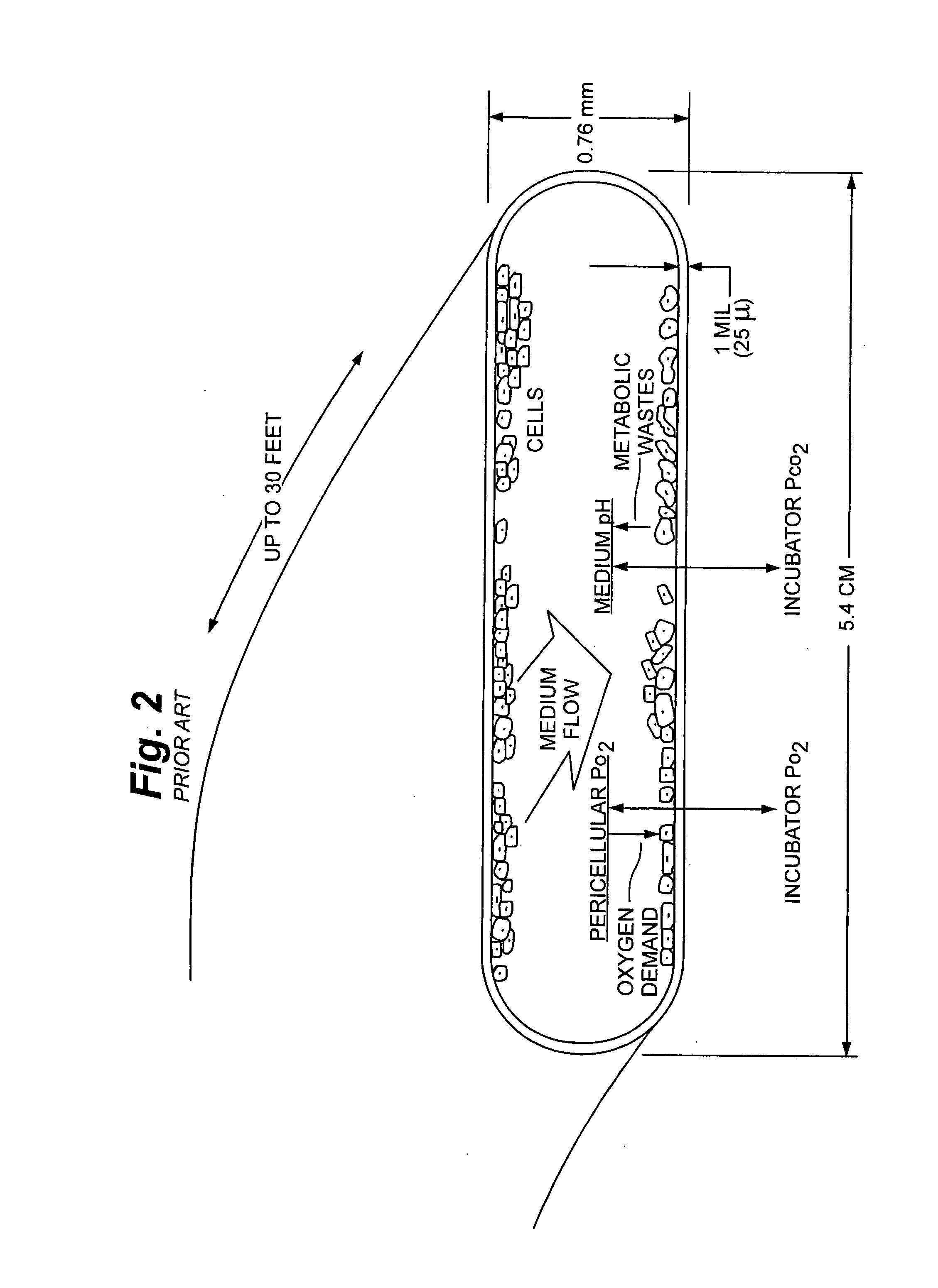Cell culture methods and devices utilizing gas permeable materials
a technology of gas permeable materials and cell culture methods, which is applied in the direction of apparatus sterilization, specific use of bioreactors/fermenters, and after-treatment of biomass, etc., can solve the problems of underestimating the rate of travel of substrates such as glucose and lactate in cell culture medium, wasting the medium in areas believed to be too far away from the cells, and reducing the number of cells. the effect of circulating oxygen and gas exchang
- Summary
- Abstract
- Description
- Claims
- Application Information
AI Technical Summary
Benefits of technology
Problems solved by technology
Method used
Image
Examples
example 1
The Effect of Medium Height upon Cell Growth and Antibody Production
[0152] Evaluations were conducted in order to assess the impact of altering medium height upon cell growth and antibody production in a device comprised of a lower gas permeable material. The effect of altering the gas permeable material surface area to medium volume ratio was also assessed. Single compartment test fixtures configured with a lower gas permeable materials and the capacity to hold medium at heights beyond conventional wisdom were compared to single compartment control test fixtures that held medium at a height within the bounds of conventional wisdom. Comparisons were made relative to the 1.6 cm medium height limits specified for the Si-Culture bag (U.S. Pat. No. 5,686,304). Control test fixtures were configured to house medium at a height of 1.6 cm, and the gas permeable material used for of all test fixtures consisted of gas permeable material obtained from actual Si-Culture™ bags.
[0153] Tubular ...
example 2
Effect of Thickness of Gas Permeable Silicone on Cell Growth
[0158] Conventional wisdom, as dictated by U.S. Pat. No. 5,686,304 and U.S. patent application Ser. No. 10 / 183,132, and the design of commercially available gas permeable products that use silicone, dictates that silicone thickness of greater than 0.005 inches should not be used. However, increasing the thickness is advantageous from a manufacturing and product reliability standpoint. Therefore, evaluations were conducted to assess the impact of the thickness of a lower silicone gas permeable material on cell growth. The material thickness of conventional wisdom was compared to the same material at increasing thickness.
[0159] Tubular test fixtures were constructed as shown in FIG. 16. Walls were machined out of Ultem 1000 (high temperature polycarbonate) cylindrical stock, resulting in a tube with an inner diameter of 1.00 inch and an outer diameter of 1.50 inch. Four distinct thickness configurations of lower gas permea...
example 3
The Ability to Culture Cells at a High Liquid Height in a Rolled and Unrolled Device
[0161] Evaluations were conducted to assess the advantages that could be obtained by configuring gas permeable cell culture devices in ways that differ from conventional wisdom. Two general formats were evaluated, 1) unrolled gas permeable devices and 2) rolled gas permeable devices. In the unrolled gas permeable device configuration, medium height was well beyond the limits imposed by conventional wisdom. The ratio of gas permeable surface area to medium volume was reduced far below that of conventional wisdom. In the rolled gas permeable device configuration, medium was allowed to reside farther away from the gas permeable wall, and more medium was allowed to reside per device, than that of the state of the art gas permeable rolled bottles.
[0162] The production of monoclonal antibody is a common application in cell culture bags and roller bottles. A traditional 850 cm2 roller bottle functioned a...
PUM
| Property | Measurement | Unit |
|---|---|---|
| thick | aaaaa | aaaaa |
| height | aaaaa | aaaaa |
| area | aaaaa | aaaaa |
Abstract
Description
Claims
Application Information
 Login to View More
Login to View More - R&D
- Intellectual Property
- Life Sciences
- Materials
- Tech Scout
- Unparalleled Data Quality
- Higher Quality Content
- 60% Fewer Hallucinations
Browse by: Latest US Patents, China's latest patents, Technical Efficacy Thesaurus, Application Domain, Technology Topic, Popular Technical Reports.
© 2025 PatSnap. All rights reserved.Legal|Privacy policy|Modern Slavery Act Transparency Statement|Sitemap|About US| Contact US: help@patsnap.com



